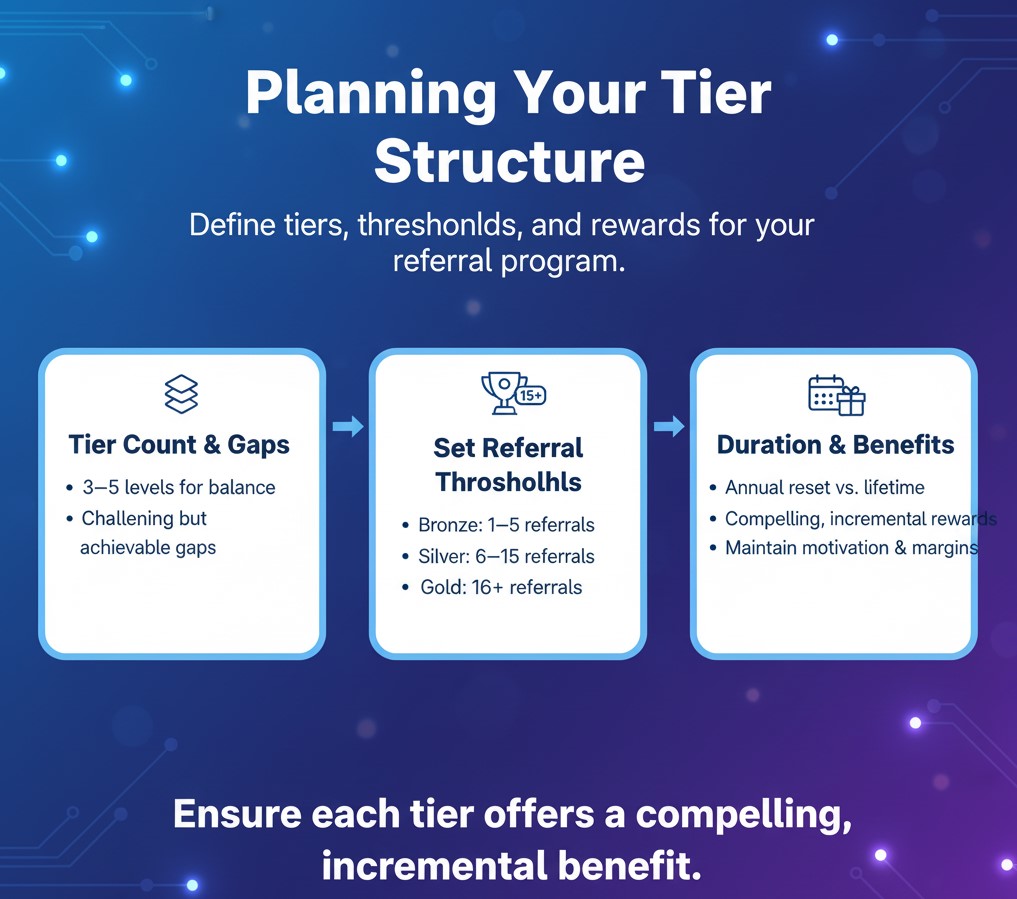Referrals are the lifeblood of organic growth. But a one-size-fits-all reward often falls short of motivating customers to become active advocates. That’s where tiered referral incentives come in. By offering escalating rewards based on cumulative referrals, brands can sustain momentum, encourage repeat sharing, and foster friendly competition.
Why Tiered Incentives Work
Tiered programs leverage behavioral triggers such as goal-setting and reward anticipation. As customers progress through levels, they feel recognized for their efforts and are more likely to continue referring. This structure also taps into social proof—top referrers are often celebrated, inspiring others to climb the ladder.
Planning Your Tier Structure
Start by defining the number of tiers and referral thresholds. Common models include bronze, silver, and gold levels, correlating to 1–5, 6–15, and 16+ referrals, for example. Ensure each tier offers a compelling, incremental benefit to maintain motivation without eroding your margins.
- Tier Count: 3–5 levels balance simplicity with progress.
- Referral Gaps: Make each next tier challenging but achievable.
- Duration: Decide if referrals reset annually or accumulate indefinitely.
Selecting the Right Rewards
Rewards should align with customer preferences and your brand value. Early tiers often use discounts or bonus credits, while higher tiers can unlock exclusive products, VIP access, or monetary bonuses. Test reward appeal with surveys or A/B experiments.
Seamless Automation and Integration
Choosing referral software that integrates with your CRM, email platform, and website is crucial. Automated tracking ensures accurate reward calculation and timely notifications. Configure workflows so participants receive tier-up emails or dashboard updates as they advance.
Communicating the Program
Clear, consistent communication drives participation. Use onboarding emails, in-app banners, social media posts, and blog announcements. Visualize progress bars and tier badges in your customer portal to spark excitement and transparency.
Monitoring Performance and ROI
Track metrics such as referral counts per user, tier progression rate, customer lifetime value (LTV) uplift, and program cost per acquisition (CPA). Dashboards that segment high-performers help you recognize top advocates and refine thresholds or rewards as needed.
Avoiding Common Pitfalls
- Overly Complex Tiers: Too many levels can confuse participants.
- Underwhelming Rewards: If incentives feel trivial, engagement stalls.
- Lack of Transparency: Customers must see how close they are to the next tier.
Real-World Examples
Companies like Dropbox and PayPal pioneered multi-level referral. Dropbox offered extra storage at each milestone, while PayPal increased cash bonuses. These success stories demonstrate that progressive rewards can fuel viral loops and rapid user acquisition.
Conclusion
A tiered referral incentive program turns sporadic advocates into loyal, goal-driven promoters. By carefully structuring levels, selecting desirable rewards, automating tracking, and communicating effectively, you can create a self-reinforcing growth engine. Start small, iterate based on data, and watch your referral-driven pipeline expand.
Learn more about: How to Choose the Right Marketing Channels for Your Business









